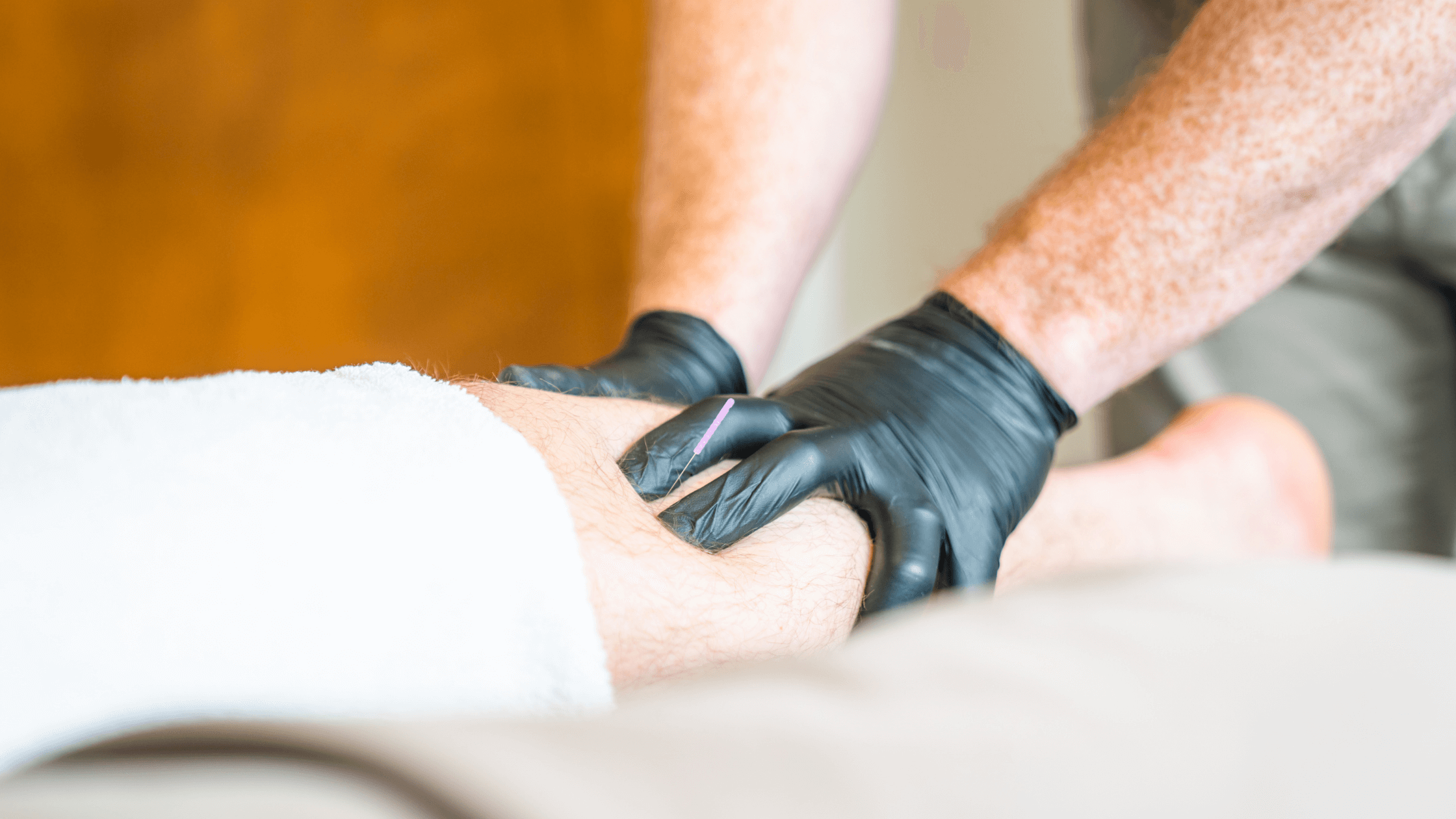What Is Dry Needling?

Licensed Physical Therapist, PT, MSPT // Certified Dry Needling Specialist / Clinical Director of EW Motion Therapy Hoover
Whether getting shots, getting blood drawn, or getting a tattoo, needles can be uncomfortable to some people, and to others, they can be a source of anxiety. If you have heard about dry needling from someone and they said it genuinely helped their condition, you may be curious and skeptical at the same time. So, what is dry needling and how can it help relieve symptoms?
At EW Motion Therapy, many of our physical therapists have dry needling certifications. Their advanced knowledge of human anatomy combined with the application of dry needling guides their treatment strategies to achieve the most symptom relief. We understand if you do not choose to have dry needling, but we want to provide some information about the treatment to help you feel more confident about choosing dry needling as an option.
This article will discuss what dry needling is and how it works, dry needling certification requirements, the differences between dry needling and acupuncture, and how much dry needling costs. With this information, you can decide whether you want to pursue dry needling to help relieve your symptoms.
Dry needling 101
Muscle pain, muscle stiffness, muscle tension, muscle weakness, and joint stiffness are very common symptoms that can be improved with dry needling. Often, a single treatment may result in significant improvement in symptoms. It’s not unusual for a client to need more than one treatment. The severity of the symptoms and the length of time the symptoms have been present are two factors affecting how quickly the dry needling produces satisfactory results.
The name “dry needling” is actually used to differentiate between the monofilament used with dry needling and a hypodermic (hollow) needle used to give injections or draw fluids. The dry needle is very similar to an acupuncture needle. It is very thin and it comes in varying lengths, from 30mm to 100mm long. The length used depends on how deep the muscle is beneath the skin.
During your first dry needling session, you will be asked to describe your pain or stiffness and where it is most pronounced, and how it is limiting you in your everyday routines, work, or recreational activities. Your therapist will observe how the affected area moves and the tissue quality or mobility. Tissue that feels or moves abnormally is often associated with trigger points, and these trigger points will most likely be the primary locations where the therapist will treat.
Because of the increased consumer interest, there are more programs available to become a certified dry needling practitioner. Becoming a certified practitioner requires one to be first and foremost a licensed physical therapist. The difficulty and length of various certification programs may differ, but each is dedicated to quality instruction on the theory, technique, safety, and appropriate practice of dry needling.
Dry needling vs. acupuncture
Even though the needles are similar, the techniques used in dry needling and acupuncture are quite different. Acupuncture has its beginnings in traditional Chinese medicine and its practice is focused on stimulating the balance and flow of energy (Qi or “chi”) that in traditional Chinese medicine is considered essential to health. The acupuncture needle is inserted into non-anatomical pathways known as meridians to promote a better flow of energy.
Dry needling, on the other hand, utilizes the practice of inserting a needle in the muscle trigger point, where the symptoms of pain are located. When the dry needle hits a trigger point, there is a twitch of the muscle and a small, quick cramp-like sensation. Depending on the goal of the session and how your therapist was trained, the needles could be inserted in and taken right out, or they could be left in for 5-10 minutes. It is very common to feel a lingering low-level ache in the treatment area that fades away often in less than 30 minutes. Throughout your session, your therapist will describe the step-by-step process so you are not surprised by a sudden needle tap.
When should I not get dry needled?
Dry needling is not recommended right after surgery or during the first trimester of pregnancy. Dry needling is also not performed around areas with implants or if a patient has cancer. If a patient has a bleeding disorder or takes blood-thinning medication, the therapist will discuss the pros and cons of dry needling under those specific circumstances.
How much does dry needling cost?
Dry needling is not covered by most insurance providers, so it is usually considered an “out of pocket” expense. Pricing can vary between providers, but at EW Motion Therapy, the out-of-pocket cost for dry needling ranges from $30-$90, depending on the number of areas to be treated and the length of time used to evaluate. Different scenarios will be discussed with you prior to the treatment.
Where should I go for needling?
Dry needling has become a common tool in the practice of physical therapy just like manual therapy, exercise, and other skilled interventions. Many physicians now request dry needling to be part of physical therapy treatment, and many of our physical therapists at EW Motion Therapy have been certified to provide this treatment. If you are interested in getting needled by one of our physical therapists, fill out our Request an Appointment form, and someone from our staff will contact you within 48 hours with your next steps.


